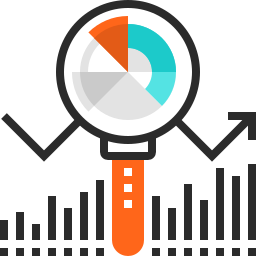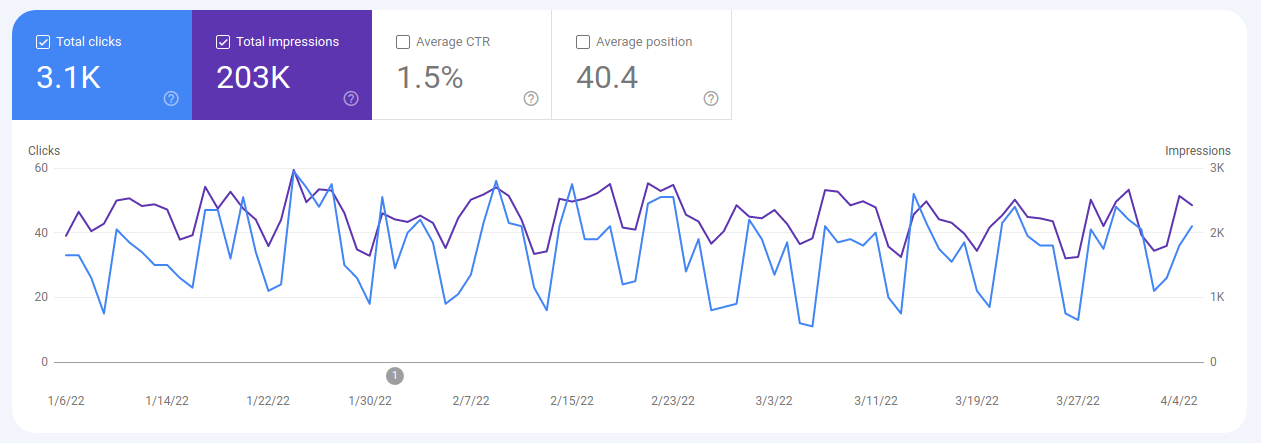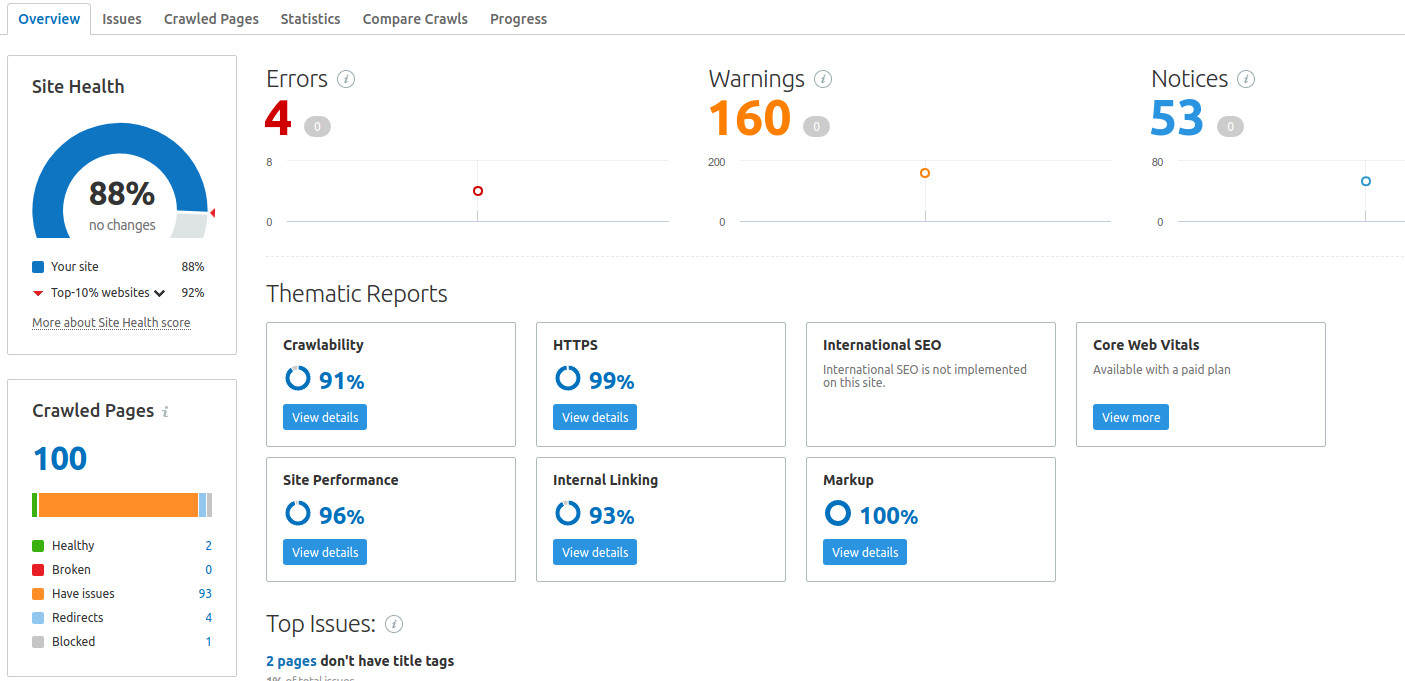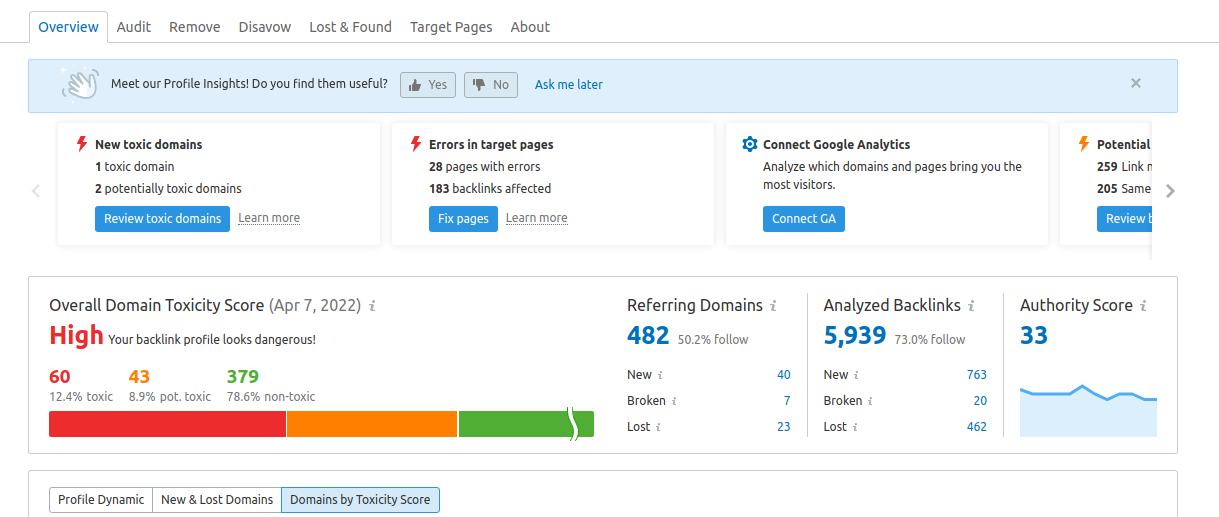
Listen to Monitoring Your SEO
Last Friday, I went over a list of places you can use to build the first backlinks to your site. This week, I will talk about how to monitor the SEO for your site and the tools I recommend using. Keeping with the theme of bootstrapping, the tools I will recommend will all be free or free versions of paid tools. There are a lot of great SEO tools on the market, and a site owner could easily spend over $500 a month on SEO tools alone. But I will show you how to extract the most value out of free tools, so your money can be better spent elsewhere on your business.
Collecting Data for SEO
Collecting accurate data is fundamental to your success. Data collection is one of the essential parts of SEO; without it, you are flying blind. As time progresses, we need to know where our traffic is coming from, what we are doing that is working, what is not working, and what we can improve on.
Google Analytics
I feel like this one is popular enough that not much time needs to be spent on it. Unless you are in the EU or in the EU and not following GDPR, your site requires Google Analytics. If you are not using a SaaS platform, you will more than likely need a plugin or a module to install Google Analytics. Installing the code directly works only somewhat. You will want to pass all transactional data and as much information as possible to Google Analytics. A plugin or module is the best choice to get the most data. If you are using WordPress and WooCommerce, make sure you use a plugin designed for e-commerce and not for traditional blogs.
Matomo
I mention Matomo solely for the readers in the EU who should be abiding by GDPR. They have two software versions, self-hosted and a paid cloud product. The self-hosted will be the best value if you are hosting your site already.
Google Tag Manager
https://tagmanager.google.com/#/home
Tag Manager is not a statistics program, but it does need to be mentioned here. If you advertise your site on multiple platforms, like Facebook, Twitter, Google Adwords, and others, each will want you to put a tracking script on your site. These scripts will slow your site down considerably. What Google Tag Manager does is acts like a go between, passing the data the other scripts need,without adding bloat to your site. If you are already running other 3rd party tracking scripts, it would make sense to uninstall them from your site, install Google Tag Manager to your site, and then run your analytics program from the tag container too. If you have a live chat widget, you can also put this in there as well. For chats, I like to set a timeout delay with Tag Manager where it waits 10 seconds after the page loads to append that script in. It keeps the site running fast. But setting up Tag Manager is an article in itself.
Google Search Console
https://search.google.com/search-console/welcome
Search Console is a free tool by Google that every website owner should use. It allows you to see insights into your site as Google sees your site. Things such as how many of your pages Google has indexed, where you rank for keywords, and your click-through rate for the words your site ranks for. All around good stuff, essential data you will need to know.

Google Business
https://www.google.com/business/
Google Business is one I mentioned in last week’s article about building citations. You can add your business for free, but you can also track its views across google products. You can also add products and short posts to your profile so that they will show on the search results pages for your business.
Bing Local Business
While nowhere near as popular as Google Business, some people still use Bing. Bing also white labels their search to places like Amazon and DuckDuckGo, so you will have a slightly more extensive reach of stats. Plus, it is how you manage your business on Bing.
SEO Tools Next, we need to talk about tracking tools. These tools can come with hefty monthly price tags (most are worth it), but a few services offer paired-down versions of their tools for free. This is where we will be focusing to stay on budget.
ahrefs Webmaster Tools
https://ahrefs.com/webmaster-tools
ahrefs is one of the best free tools for your site. It provides a ton of information about on-site issues to help you get started in your SEO journey. It will let you know what their domain rank for your domain is, how many backlinks and referring domains your site has, and some other cool features. One thing it does not do is position tracking.
Setting up ahrefs is pretty easy. All you have to do is go to their site to set up your free account. You will need to verify your email and enter your domain. From there, ahrefs will do an initial crawl on your site.

Click through the left navigation bar and check out some of their features. Some things will require a paid account, but there are a lot of valuable free tools. The site audit feature will come in handy in a later article about on-site SEO. You will also need to connect your Google Search Console to ahrefs as well, to get the best quality data.
SEMRush
https://semrush.sjv.io/c/335830/995972/13053
SEMRush is another tool that provides a lot of value for free users. You can audit up to 100 pages of your site and track up to 10 keywords for ranking positions. Another handy feature is you can have a glimpse at your competitor’s data. Below is an example of what shopify.com looks like in SEMRush.

SEMRush will be one of those tools we will rely heavily upon. The number of features can be a bit overwhelming. I will quickly run through them and show you how to set them up. The first thing you will need to set up is the site audit; it is relatively straightforward. All you have to do is enter your website address. The free version is limited to 100 pages. For most new sites, that should not be a problem.
Next, you will want to set up the backlink audit. You will need to enter your domain; then, you will need to connect to your Google Search Console. They have a quirky way; you need to add a user to your account. Once you do that, click “Check Connection.” From there, it will start to import your backlinks. It will take some time to populate, so we might as well begin position tracking.
Go to position tracking on the left-hand navigation. When you click add new keywords, it will populate words from your site. You only get ten keywords to track, so make the best out of them. One thing to keep in mind is to be reasonable at first with your keywords. A new site will not rank in the top 100 for a term like “supplements” right off the bat. You might have a better chance of ranking for your lesser-known brands keywords. Keywords like “brain-x supplements” or “affordable supplements.”
Once you add your keywords, it will take some time to collect the data as well. You can use this time to look at the different tools SEMRush provides. Some of the tools are very advanced, while others are straightforward. This early in our SEO journey, it’s best to focus on the backlink audit, position tracking, and site-auditor.

Once your site audit comes in, it will be something like the image above. You can browse through the different errors to see which issues you need to fix for your site. Thankfully, most e-commerce platforms make most of these issues easy to fix without requiring a developer.

Next, your backlink audit should come in as well. Hopefully, it looks better than the one pictured above. If not, SEMRush provides you with an interface to disavow your toxic backlinks. You are limited to 10 at a time, but it is still beneficial.
Conclusion Now that we have some basic monitoring set up, next week we can get back to performing actual SEO work that will increase the ranking of your site. Join me next week where we will be going over on-site factors, using the tools from this article.
If you have any questions about the tools we went over today, ask them below and I will try to answer as best as possible.
About the Author: Lesley Paone
Lesley has worked in e-commerce for over a decade, and is the founder of dh42. Starting out with PrestaShop and brancing out into other platforms like Shopify. He loves all things e-commerce and loves a challenge, in his spare time he helps moderate several forums on SEO, e-commerce, as well as the PrestaShop forum. If you have any questions for him about any of his articles just use our contact form to contact him.
